Today’s review is of a pair of lenses that you don’t see very often, nor do you read/ hear much about – the Schneider PC-TS 2.8/50 Super-Angulon and PC-TS 4.5/90 Makro-Symmar. There’s a third lens, a 28mm, which has been announced but as of March 2014 is not available. Given that there aren’t too many perspective control options for 35mm DSLRs, and one is always on the lookout for optics that better match the resolving power of cameras like the D800E, it made sense for me to try these two…
Perspective control or tilt shift is pretty much what it says on the box: the entire optical cell plane moves relative to the sensor plane to either correct for converging lines (shift) by forcing a higher or lower virtual perspective, or allows for movement of the depth of field plane of the lens to one that is non-parallel to the sensor plane to either extend or reduce depth of field. Various effects may be produced by combining these two movements together with different axes. Shifts are very useful in architecture to straighten converging verticals if you cannot get to the right height to hold the camera perfectly level, or for product work where you want to shift the camera out of the reflection of the object you’re photographing. Tilts are useful to extend depth of field for landscape or close distance work, or reduce it for portraiture.
With that in mind, and before we examine the Schneider’s incredibly complex mount, this is how the various T/S options stack up:
1) Nikon: tilt and shift axes fixed perpendicular, but the axes can move together through 360 degrees about the lens mount. Axes of the 24mm can be made parallel (far more useful for landscape and architecture) easily by undoing four screws; the 85mm requires a new flex and has to go back to Nikon; I’ve not been able to find confirmation on whether the 45mm is easily modified or not. +/- 11.5mm shift and +/- 8.5 degrees of tilt; 24, 45, and 85mm.
2) Canon: tilt and shift axes independently rotatable through 360 degrees. +/- 12mm of shift and +/- 8.5 degrees of tilt (for version II models; slightly less for version I); 17, 24, 45 and 90mm.
3) Rokinon/Samyang: tilt and shift axes independently rotatable through 360 degrees. +/- 12mm of shift and +/- 8.5 degrees of tilt; 24mm only.
4) Schneider: tilt and shift axes independently rotatable through 360 degrees. 12mm of shift and 8 degrees of tilt; 28, 50 and 90mm.
Clearly, of all of these, the Nikons are the least useful because their tilt and shift axes do not rotate independently.
By far the most clever feature of the Schneiders is the mount barrel. It’s also the most complex, and as we’ll see later, a bit of a mixed blessing. But first, here’s what each of the rings – no less than 8(!) do:
1 – Pull forwards to rotate T and S axes
2 – T axis geared control, 0-8 degrees
3 – Pull forwards to rotate S axis only
4 – S axis geared control, 0-12mm
5 – Tripod collar, removable
6 – Focusing ring
7 – Aperture ring
8 – Stop down ring – it’s important to note that the lenses have no electronic communication with the camera body or electromechanical diaphragm coupling, so you must remember to use the blue knurled ring to stop down before taking the shot.
What we get is very precise control over every single axis and movement. Build quality is unquestionably superb; these are amongst the most solid and precise lenses I’ve used, bar none. The lenses even come packaged in a useful, well-padded silo case with velcro loops for a belt or bag. But, since the lens is so big – for reference, the front threads are a whopping 95mm in diameter, and the 50mm weighs 1.4kg – and the balance is so front-heavy, you really do need to use the built in tripod mount. It also keeps movements about the optical centre of the lens. However, this creates some problems because the rotations are cumulative relative to the camera, and the tilt or shift only happens in one axis – so if you decide you need a negative shift instead of a positive one, you’ve got to rotate the whole thing about the tripod collar and pull the right collar to rotate the mount, then reverse motion on the other T or S axis, too. Changing the angle of the tilt or shift is NOT straightforward; on all of the other options, it’s a case of just moving the unlock lever and rotating the lens – nice and intuitive.
The tradeoff is that with the other options, the geared knobs to control movements are nowhere near as precise as the Schneider; you can easily set fractions of a millimetre or degree. This is difficult to do with the Nikon, Canon or Rokinon lenses as their gearing is simply too fast. It’s less of an issue with the longer focal length, but at 50mm, the lack of precision starts to become felt, and by the time you hit 24 or 17mm, very small movements can make a big difference – especially in the tilt axis. I almost never use more than 2-3 degrees of tilt or 3-4mm of shift with the 24 PCE, but using the full range of the 85 PCE is normal.
The 50mm appears to be a telecentric design with 9 elements in 9 groups; the 90mm is a symmetric double-Gauss variant with 6 elements in 4 groups and a maximum magnification of 1:4 – personally, I find this very low magnification and the distant near limit of 60cm makes the ‘Makro’ naming somewhat misleading; I was initially excited about the possibility of using the 90mm for my watch photography work as increased precision is always good – but at 1:4 and so-so performance with extension tubes, it turned out not to be a viable option.
A very modest maximum aperture – just f4.5 compared to f2.8 for the Nikon and Canon lenses – and simple optical formula for the 90mm raises expectations of optical performance. Resolution across the frame is very good at f4.5, but improves noticeably at f5.6, peaking at around f8. It matches the already excellent 85mm for resolution, but perhaps exceeds it very slightly for clarity and microcontrast. Performance at the extremes of the shift and tilt regimes is slightly better than the 85 PCE, too; there is less longitudinal and lateral chromatic aberration, though some odd flare/ ghosting around high contrast areas occurs at maximum tilt and wide open. All in all, a very solid performance.
Unfortunately, the same cannot be said of the 50mm: whilst the Nikon 45 PCE is one of the best lenses they make, the Schneider 50mm is a disappointment. It is hazy and exhibits lateral chromatic aberration wide open – even without shifting or tilting, and must be stopped down to f5.6 to be acceptable on the D800E. Peak is again at f8-11, and after that diffraction has taken over. For a lens of this size, mass and price, effectively having only 2-3 usable stops of aperture is simply not good enough. Given the surprise of these results, especially from the 50mm, I sought confirmation – unfortunately, obtaining a second sample wasn’t really an option, but fortunately Lloyd Chambers (of Diglloyd) had also tested both lenses and concurred with my findings on the 50mm – the lens is just soft and hazy on the D800E. What I found slightly concerning about both lenses was the odd colour balance. They are a far cry from neutral; in fact, there’s a strong magenta-cyan shift that’s tricky to correct and renders skies with a very odd hue. Vignetting is of course a non-issue for both lenses, given the size of the image circle.
Given the optical results, and general fiddliness of using the lenses, I’d give the 90mm a qualified recommendation – for those doing work that requires incredibly precise control of shift and depth of field, on subjects that aren’t too small, I’d probably pick the 90mm over the Nikon 85 PCE. However, I cannot recommend the 50mm at all – the optics are very disappointing.
The Schneider PC-TS 50mm and 90mm lenses are available in Nikon F, Canon EOS, Pentax K and Sony Alpha mounts here from B&H
____________
Places left for 2014 Making Outstanding Images Workshops: Havana and London – click here for more information and to book!
____________
Visit the Teaching Store to up your photographic game – including workshop and Photoshop Workflow videos and the customized Email School of Photography; or go mobile with the Photography Compendium for iPad. You can also get your gear from B&H and Amazon. Prices are the same as normal, however a small portion of your purchase value is referred back to me. Thanks!
Don’t forget to like us on Facebook and join the reader Flickr group!
Images and content copyright Ming Thein | mingthein.com 2012 onwards. All rights reserved

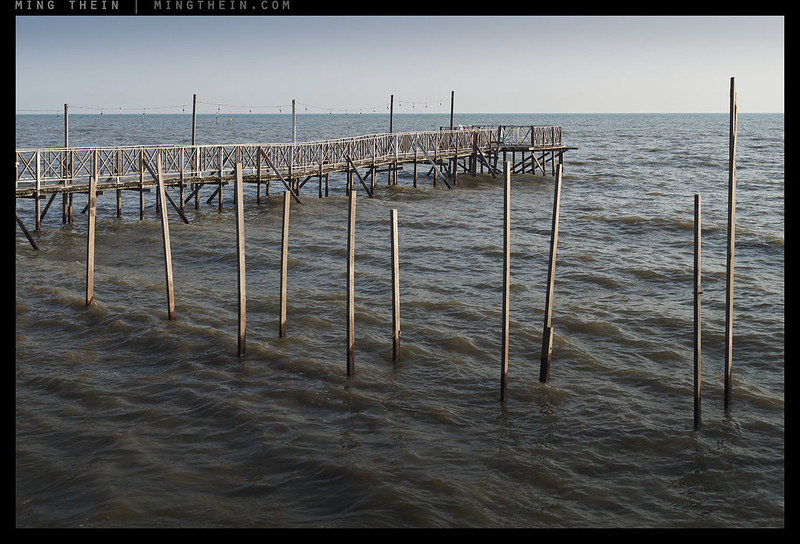
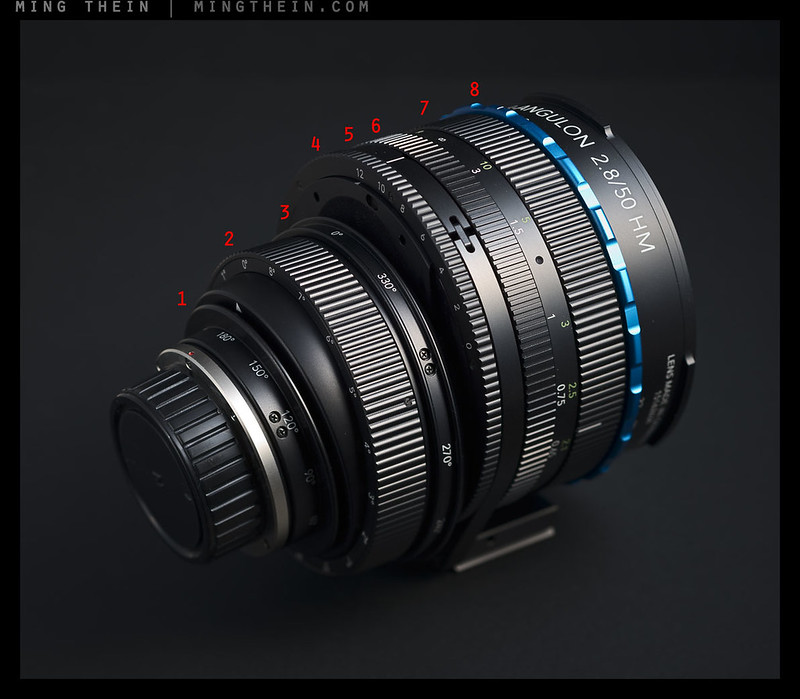
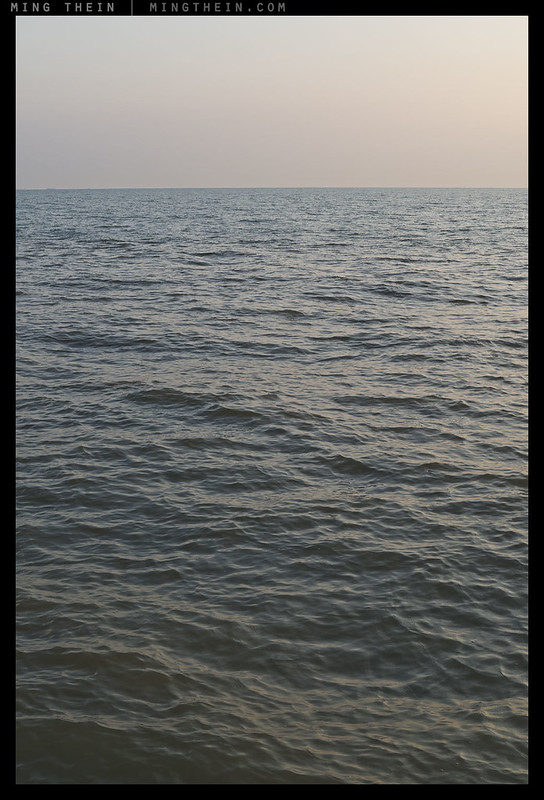
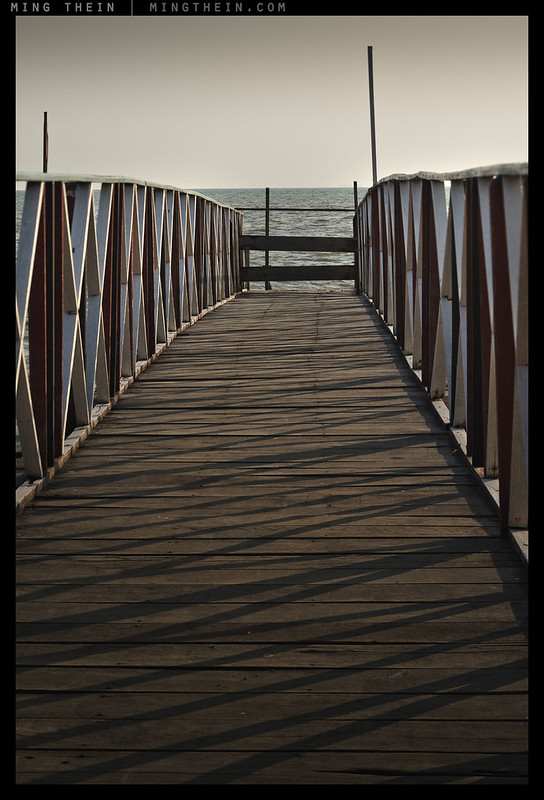
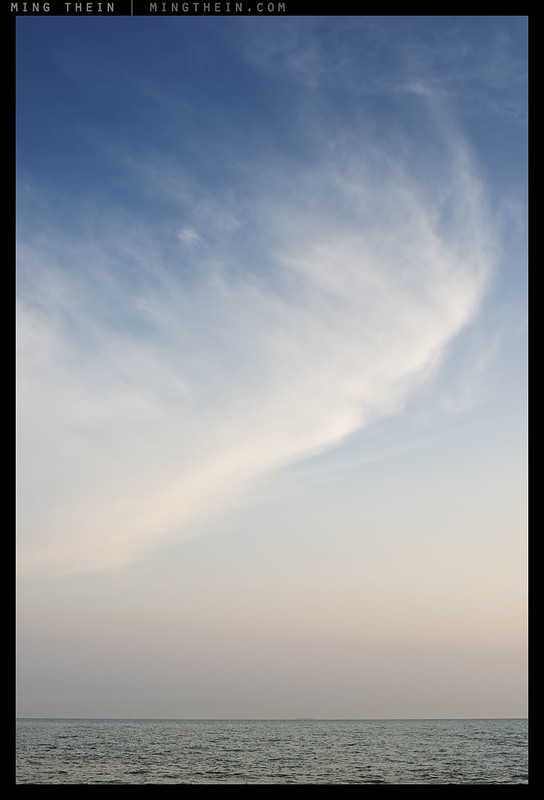

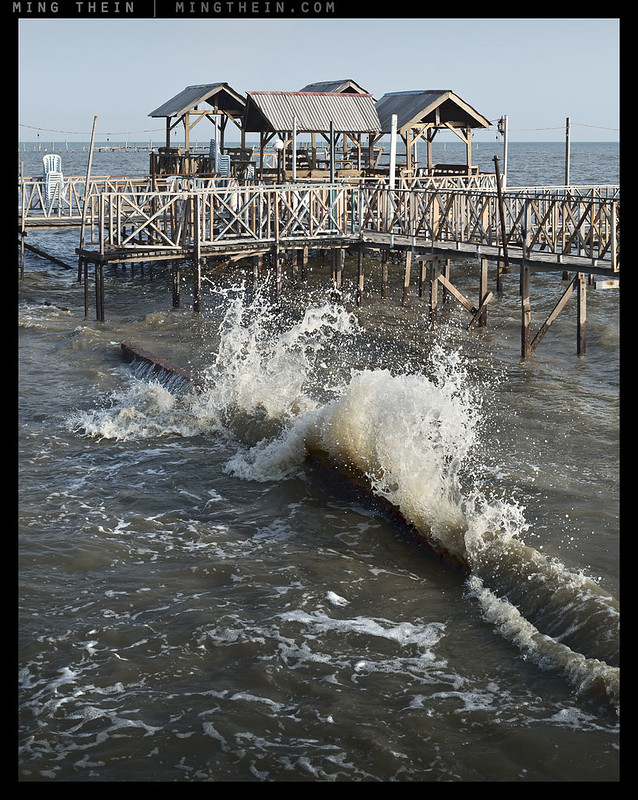






I went ahead and bought a 90/4.5 for architectural stitching despite you describing it not suited for product photography with tubes. Comparing the 85 PCE, either I tried a so-so copy of that lens or you tried a so-so copy of the 90/4.5, because my 90/4.5 exceeds my 85 PCE more than the “slightly” you report, particularly at the extreme movements. I wish I’d saved some comparison shots. I’m also not seeing the color cast issues you report.
Just an FYI for anyone considering this one.
I’m not surprised, actually – but give the he scarcity of these things, there was simply no way to get another one to test to verify my findings…
I know this review is ancient (in internet timescale), but do you happen to remember just *how* “so-so” the 90 was with extension tubes? Or whether you tried a slight extension or just went straight for major magnification?
20 and 36mm tubes, and honestly not that great.
Surprised to hear some less than flattering words on the 50mm as I know an Australian based photographer Timothy Poulton uses this lens to great effect. You can see his 500px profile here – http://500px.com/tpoulton001
You can’t tell a thing about pixel quality at web size.
Ming,
I am so hesitate for buy Nikon 45 pce or the 50 Scheider. After try too the 50 Schneider, a big doubt !! Same you feel dissapoint. But i never try the 45 pce on D800 (but owner of the 85 pce, very nice lens 🙂
Please, Can you tell me more about the quality of the 45 pce on your D800e, Without any tilt and shift did, and with tilt and shift did. With an aperture at 8 and 11, why not 16. I shoot product, It is in corner or side, great or so shame.
Comparate with the 85 pce, same quality or little bit less…
Thank you
Christophe
Similar to the 85, but there is some sample variation. F16 has diffraction issues.
Thank you
Thank you very much for review. Excellent as always. I read, there exists a software which extends the depth of field. It is of course
much cheaper than a pc-lens. I’m wondering if the software was perhaps the better solution for still-life work like your watches.
Best regards from Germany
Thomas Roessler
p.s. your reviews were very helpful for me when I had to buy a DSLR. I’m now a happy owner of a D800 and of some of your favourite lenses. … But still love my old Plaubel.
Photoshop will do focus stacking quite well; you just need to maintain magnification as you shoot multiple images. And yes, it’s much better suited to static subjects with controlled lighting. Sometimes we have no choice but to use stacking even with PC lenses because you don’t have enough DOF at that magnification…
Ming,
Another fine fine article; for your content and then for the comments that follow.
In my modest commercial real estate shooting “business” I have settled on using primarily my Nikon 14-24 and rely heavily on DXO Optics’ “Viewpoint 2” to correct verticals if I am off level, or rather “need” to be off level (ie when I would be shifting if I had a shifting lens.) I understand the tradeoffs manipulating (interpolating) pixels, but RE work is not especially demanding of high resolution (or in fact high anything – at least in my market). Essentially you can shoot “down” into an interior space and then very excellently correct for convergence in the DXO package. I am not sure this gives the exact same result as true shift, but it is close and also really fast (the shooting part).
I use viewpoint sparingly now in lots of my other shooting where it often subtly improves pov in shots where we as photographers have long ago just become used to convergence/divergence – which is always there due to the camera missing much of what our biological system feeds us about geometry automatically or what got lost when fixed mount cameras became the norm.
Viewpoint 2 has a few other tricks, including some volume deformation settings that make wide shoots look “a little less wide” and I am always shooting “too wide” so this is a good thing. This is my poor man’s solution vs going all out with with T/S lenses – although the Canon 17mm has had me thinking about brand shifting more than once, as it seems to be “the one” – although in many respects, my 14-24 is also another “one” – for he work I do.
I am also increasingly using HDR techniques to grab the usually huge dynamic span that “pulling” windows and light fixtures requires – a little off topic – but I’ll just mention here that Nik HDR Effects Pro gives by far the best natural result at its default. (IMHO). Both programs have become critical for me.
http://www.dxo.com/intl/photography/dxo-viewpoint/wide-angle-lens-software
http://www.google.com/nikcollection/products/hdr-efex-pro/
some of my shooting …
http://www.dpreview.com/galleries/3138107984
cheers
Fred
The end output is similar to true shift except for pixel degradation, and there’s only so much you can correct virtually before you land up with something that looks oddly proportioned.
I actually think excessive shift can look very unnatural, but hey, if that’s what the client wants…
I’ve always been intrigued by these lenses. Any chance you could post a tilt versus non-tilt lens versions of same scene, especially a landscape, to demonstrate what the tilt control offers?
They greatly extend or reduce depth of field for a given aperture. If your focal plane is a flat sheet, you can basically lean it and rotate it.
Ming, I shot the 90 about a year and a half ago (rented it). It IS a complicated piece of kit. One note which I know you don’t run into in Malaysia – it is impossible to use with gloves on as the adjustment rings are simply too narrow.
Good point! They’d be almost impossible to distinguish by touch, too.
I would like to ad more possibilities for the use of T/S:
If money is not the problem, the lenses from Hartblei seem to be very good, Hartblei is using modified MF Zeiss lenses.
http://hartblei.eu/en/optics-by-carl-zeiss.htm
If money is a smaller problem, you can get the original Zeiss MF lenses for very good prices and use a Rhinocam adapter for your NEX body. I wrote about my experiences here:
http://www.stevehuffphoto.com/2013/08/22/170-megapixels-with-a-sony-nex-camera-and-vizalex-rhinocam-by-dierk-topp/
And last but not least there is still the classical 4×5 body with all movements, you can dream of.
Again with the Rhinocam adapter and a NEX you can mount this on a 4×5 camera. You take as many shots as you want (I did up to 40) shifting the NEX within the Rhinocam and/or shifting the whole Rhinocam with the shifts of the 4×5. Of course only of relatively static objects!! and stitch.
You end up with images up to 200 or 300 MPix or even more. With all tilt and shift movements you need. And for a great price. A friend just bought a 4×5 Sinar for about 200€, the Rhinocam is about 300$, the NEX is used in the same range and you need a large format lens (that does not need a shutter), again in the same range.
Here are my first images of this combination:
With a 4×5 Gandolfi field camera
and with Sinar P studio camera
have fun 🙂
It turns out the 4×5 bodies are not really well suited for use with DSLRs – the movements simply aren’t precise enough. For film, 15-20 deg is normal; for digital, you need control in fractions of a degree and seldom use more than 5deg. Tried the D800E with a modified mount board and even a long lens on my Arca 4×5; not practical at all – it isn’t precise enough. Would be even worse with short lenses.
I had the same problem with my Gandolfi 4×5 field camera and decided to buy a Sinar P tree weeks ago. On the Sinar P it is possible to adjust the movements very precise. I would say tilt in fractions of a degree and swing in parts of a degree too. Shift and distance is very precise too. Fantastic mechanics like a Swiss watch 🙂
The advantage with the use of the Rhinocam is, that in conjunction with focus peacing (or even focus magnification) you can control the movements perfectly and by sliding the camera within the movements of the Rhinocam you cover a 4.5x6cm area without using the shift of the camera and keep the focus peaking active. The NEX body is so light, that the camera movements are not influenced.
I am not a Pro like you and for my personal use and joy it is great and I get much more freedom than with a FF T/S lens.
Ah. There are geared solutions such as the P and Linhofs – but honestly, those things feel a bit like overkill for the application.
If you have geared movements on the rise/shift axes of the rear standard, you don’t really need the Rhinocam – the movements are the same as sliding laterally/vertically…
Hey Ming,I recently asked you a question on t/s lenses on Twitter, and this article is just extremely helpful. I’m finding my way into more and more architectural photography jobs, and I’m thinking on investing in a PC lens. I use Nikon, and I’m told the Canon TS lenses, especially the wide angle ones, are just much better than the Nikon PCs.
I was thinking of getting one of the the old PC Nikkors, a 28mm to experiment, but they only shift…
Would you recommend the rokinon over the old PC Nikkors?
I replied to that. The Nikon 24 PCE is the weakest one in the lineup. The 45 and 85 are outstanding. The 24 is merely very good. Haven’t used the old PC Nikkors; I personally wouldn’t get the Rokinon.
Yes, I know you replied, and I thank you for that! In fact, you always do 🙂
Thanks once more for the helpful tips. I’ll see what I’ll do about this… or I’ll just continue using a Tokina 11-16 and correct perspective in post… this is a pretty good lens!
Thanks so much for the review, Ming. I have been interested in these lenses for a very long time but have been unable to get my hands on a sample to test for myself. Great review as always!
Thanks. They’re tricky things to get hold of…
Frankly I don`t quite
get
this, Schneider makes some superb lenses for Phase One. Why should they put their name on this 50 mm you say is a lemon.
A very good question, and the 90mm is excellent – but unfortunately the few other reviewers who have tried this lens (including Lloyd Chambers) concur with my findings.
I have tried all 3 on a D800E and would agree with your findings and add that the 28 is disappointing. I also found them impossible in the field really slowing things right down. The Nikons even with their shortcomings are a better bet for me at least.
That’s a shame – I was hoping the 28 would be better…
Great review Ming, I’ve also read Diglloyd’s and find both helpful from different perspectives. I’ve been using the 90 for a while and absolutely loved it (the Zeiss Otus and the Schneider 90 are my two favorite lens). It might not have the same level of micro-contrast as Zeiss (at least in landscape photos, it appears so to my eyes), I felt that its blurring has a particular “crisp” in it compared to Zeiss’ oily feeling (hope you know what i mean, couldn’t put them into proper words). I wonder if you use the 90 much for your product work – watches, food, etc?
What’s also interesting to me is that looking back, the D800E was a revolutionary product in the sense that it has stimulated a series of high-end lens, this in a way opened many possibilities for a photographer’s creativity. Noticed that Schneider who used to be away from DSLRs are coming into this market, Zeiss is offering high-end Otus line for larger pixel camera bodies, and they are also providing cine lens to video lovers. What an exciting world we’re living in!
To be honest, I prefer the Nikon 85/2.8 PCE; it has more magnification than the Schneider and less CA.
I haven’t used the Nikon 85 PCE much though have got my hands on it in a second-hand store. Ergonomics-wise the 85 is much more convenient but the ways they draw look different. You can put extention tubes onto the 90 for better magnification, no?
Yes, they do draw differently – though by f8 (or more, for product) there’s not much difference.
You can put tubes on the 90, but image quality degrades and things get very dark…
I am lucky to own the Micro Nikkor 85/2.8 PC, the old version with full manual aperture. I used it on the D3 and now I use it on my NEXes and A7R for almost all stills and product shots (not professional work!).
I don’t know of any adapter, to use the PC-E version on mirrorless. I had the 24mm PC-E and had to stop down on the D3 and unmount it stopped down, when I wanted to use it on my NEX. Not very practical for shooting in the field.
Up to 1:1 for the 85mm PC is great with the Canon Close-Up lens 500D, you don’t loose light like with tubes, big and expensive but to my judgment very good.
The new version unfortunately a) won’t work on the non-electronic non-Nikon bodies because you won’t have aperture control, and b) you have to send it back to Nikon to rotate axes; I think the old one was a possible DIY job. It might work on the Nikon 1s, but I can’t see the point, frankly – there’s more than enough DOF by stopping down anyway because of the sensor size.
500D vs tubes – if you’re going to stop down anyway and you’re using lights, it doesn’t really matter; you might as well avoid the additional optics. That said, you may have to stop down more with the 500D because of the additional magnification…
I absolutely adore my Canon TS-E 17mm. An amazing lens, especially once you stop it down (admittedly a fair amount) so that full shift is still sharp corner to corner. It’s also a breeze to use. My only complaint would be the high rate of turn for the shift/tilt knobs as you suggest. Although this is also useful in some instances. The settings are very quick and easy to set up and independent shift and tilt axis are fantastic. You always have to remember to manually focus, but the Canon lenses are electronically linked so do aperture automagically from the camera if required – although this is generally only useful on non-adjusted shots, otherwise manual all the way. I’ve never had so many compliments from random stranges as from when I am out with the TS-E oddly enough. Most people think it is a fisheye of course.
Also of note to any potential buyers is try the lens on your camera first as depending on the camera the knobs can be blocked or very hard to adjust depending on where you rotate the axis. On a 7D for instance the flash/prism bulge can stop you spinning the adjustment around in certain places. 5D has enough clearance (with reduced prism bulge). I imagine this might apply to a lot of the tilt shift lenses on different cameras.
Absolutely. The Nikon lenses have to be rotated in a certain direction to get access to the knobs on cameras with a flash protrusion…
I love the 17mm TS-E too – but on the Sony A7R with a Metabones adapter MK III
but if somebody is interested in the Canon 17mm TS-E on the A7R, you may find my post at Steve Huff on this combo:.
http://www.stevehuffphoto.com/2014/02/03/the-sony-a7r-with-canon-17mm4-ts-e-architecture-dream-team/
and all 17mm TS-E images in my 17mm TS-E album at flickr:
and here is this lens on the Leica M9!
Very interesting Ming. My reaction to the images is one of feeling like I’m floating above the scene. It’s a nice device in combination with the images’ crisp definition and large depth of field.
The build looks awesome. It would be great if these were made with Zeiss glass.
Is the tilt shift effect of a lens like this very different from the effect range open to users of view cameras using standards? Or is this the same thing?
Thanks Linden. Agreed: if only Zeiss would make tilt shifts with independent axes…I’d take a 21, Otus and 100 Makro-planar for starters. I have actually fed this back to some people in management and received the response that it’s certainly under consideration.
The effect of T/S lenses are effectively the same as view cameras, but for smaller formats.
You can use the fabulous Hasselblad Zeiss medium format lenses that you already own on 24x36mm sensor cameras with a tilt-shift adapter such as the Mirex.
I’ve tried them with a regular adaptor; the problem is they don’t really hold up very well on the D800E’s pixel density, and the Mirex isn’t geared, but the ‘blad lenses are extremely heavy…
Really love the look of the Hasselblad Zeiss 110mm f/2 lens on my Nikon D700; my favorite portrait of my daughter was made with that combination. Maybe if Dr. James Brian Caldwell were to make a focal reducer adapter for putting Hasselblad V lenses on high resolution FX cameras you might like the combination better.
Possibly; the MF Hassy lenses were fine on anything that has similar pixel pitch/density to the CFV backs – about 6-7 microns – but the smaller ~4.5 micron pixels of the D800E appear to be a challenge for all but the best of them. Haven’t got the 2/110 (I don’t have a 2-series FP body) so I can’t comment on this one though 🙂
I find a lens like this much more intimating than 4×5.
I presume you mean intimidating. It’s certainly a lot less intuitive to use because you have to perform the movements in a specific order, otherwise it turns into a bit of a mess…
I consider myself a mediocre amateur photographer but your 6th photo reminded me one my favorites:

By the way, nice review, I was navigating on BH site this week and saw those lenses and got kinda curious about the optical quality. The build quality seems very sturdy.
Thanks. Photography is subjective, which of course means we all have out preferences…
As for the Schneiders – build quality is on par with the Zeisses and Leicas, perhaps slightly better.